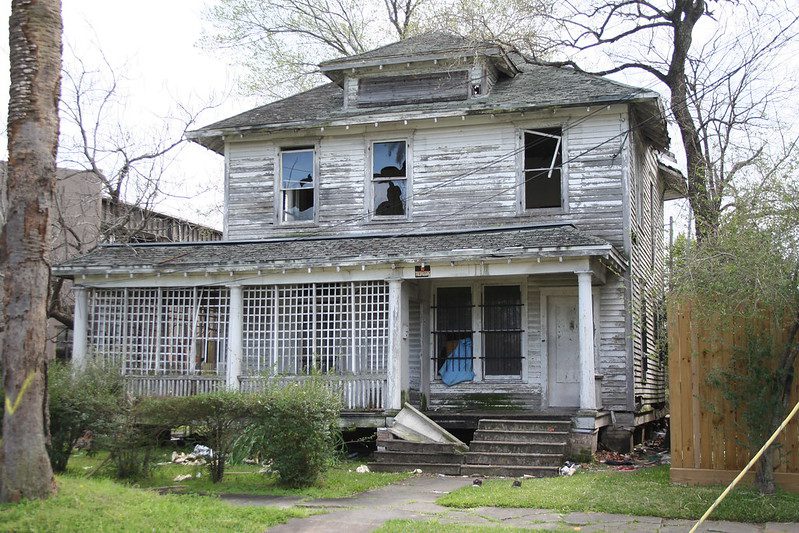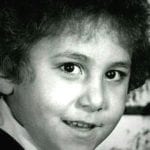 Weird Stuff
Weird Stuff  Weird Stuff
Weird Stuff  Our World
Our World 10 Ways Your Christmas Tree Is More Lit Than You Think
 Movies and TV
Movies and TV The 10 Coolest Stars to Set Sail on The Love Boat
 History
History 10 Things You Didn’t Know About the American National Anthem
 Technology
Technology Top 10 Everyday Tech Buzzwords That Hide a Darker Past
 Humans
Humans 10 Everyday Human Behaviors That Are Actually Survival Instincts
 Animals
Animals 10 Animals That Humiliated and Harmed Historical Leaders
 History
History 10 Most Influential Protests in Modern History
 Creepy
Creepy 10 More Representations of Death from Myth, Legend, and Folktale
 Technology
Technology 10 Scientific Breakthroughs of 2025 That’ll Change Everything
 Weird Stuff
Weird Stuff Ten Bizarre Facts About The Doge Meme
 Our World
Our World 10 Ways Your Christmas Tree Is More Lit Than You Think
 Movies and TV
Movies and TV The 10 Coolest Stars to Set Sail on The Love Boat
Who's Behind Listverse?

Jamie Frater
Head Editor
Jamie founded Listverse due to an insatiable desire to share fascinating, obscure, and bizarre facts. He has been a guest speaker on numerous national radio and television stations and is a five time published author.
More About Us History
History 10 Things You Didn’t Know About the American National Anthem
 Technology
Technology Top 10 Everyday Tech Buzzwords That Hide a Darker Past
 Humans
Humans 10 Everyday Human Behaviors That Are Actually Survival Instincts
 Animals
Animals 10 Animals That Humiliated and Harmed Historical Leaders
 History
History 10 Most Influential Protests in Modern History
 Creepy
Creepy 10 More Representations of Death from Myth, Legend, and Folktale
 Technology
Technology 10 Scientific Breakthroughs of 2025 That’ll Change Everything
Top 10 People Who Were Convicted For The Work Of Serial Killers
When a serial killer strikes, it is usually a random act of violence. Of course, the randomness complicates the investigation if the police aren’t aware that the killer was a stranger to the victim. So they may only focus on the usual suspects, which sometimes leads to the conviction of the wrong person.
If it is known that a serial killer is active in the area, everyone, including the police, can be whipped into a panic. Then an innocent person can be convicted because the authorities are desperate to close the case.
It is especially tragic that these serial killers not only murdered dozens of people but also stole years of freedom from the individuals who were wrongly convicted for the crimes the killers committed.
10 Still-Unidentified Serial Killers
10 Benjamin Miller

In 1967, the bodies of black prostitutes started turning up beside the Merritt Parkway near Stamford, Connecticut. By 1971, five of them had been found. All the victims had been strangled to death with their own bras. Lead investigator George Mayer only had one suspect, Benjamin Miller. However, there was no evidence connecting Miller to any of the murders.
Miller was a postal worker and a schizophrenic. He was known around the rougher parts of Stamford as a self-proclaimed preacher who waved his Bible at prostitutes while yelling at them. However, Miller wasn’t that committed to anti-prostitution because he had paid for the company of a prostitute on at least one occasion.
Without any physical evidence, Mayer decided to interrogate Miller. Then he was sent to a psychiatric hospital where he worked with a doctor. During his hospital stay, Miller, who was delusional, admitted that he had killed the women. As a result, he was charged with their murders.
Four months later, Robert Lupinacci, a man known to patronize black sex workers, was arrested after trying to strangle a prostitute near the parkway. But there was more evidence than his attempt at a similar crime in the same area where the Bra Murders had taken place.
Lupinacci’s car had been seen near the murder scenes and the places frequented by the victims. Inside his car, the police found hair from black women.
Probably the most damning piece of evidence found in Lupinacci’s car was a deck of pornographic playing cards. A year earlier, police had found a card from a pornographic deck near one of the bodies. Lupinacci’s deck was missing a similar queen of hearts.
This did nothing to change the mind of Mayer or the district attorney. Miller pleaded not guilty due to insanity, and he was institutionalized for committing three murders. (Two of the five original murder counts were dropped as part of a plea bargain.)
Ten years later, an attorney caught wind of the story. Over the next seven years, he argued in court that Miller was not the actual killer. In 1988, after spending 16 years in a psychiatric hospital for a crime he had not committed, Miller was granted a second trial.
The charges against him were dismissed, essentially making him a free man. However, years of institutionalization had rendered him incapable of living on the outside and he voluntarily committed himself. He died at age 80 in February 2010.[1]
Lupinacci was never charged in the Bra Murders and always denied committing them. He said that the assault for which he served three years was the only crime he had ever committed. Lupinacci never had another run-in with the police. He died from natural causes in February 2014.
As for Mayer, the man who was responsible for Miller being imprisoned, he never wavered in his belief that Miller was the murderer. Eventually, Mayer became the chief of police in Stamford. He died in November 2014.
9 William Avery

On February 17, 1998, the body of 39-year-old Maryetta Griffin was found in a pile of garbage in a garage in Milwaukee, Wisconsin. Griffin, who worked in the sex trade, had been strangled to death.
As the police investigated the murder, they connected Griffin to a crack house that was operated by William Avery. When Avery heard that the police were looking for him, he voluntarily went in to be interviewed.
According to an affidavit, Avery said during the interview that Griffin had been at the crack house earlier and that he remembered “grabbing” her, but then he blacked out. However, Avery later said that this was a false statement.
The police ended up arresting Avery and his partner in the drug business. There was no evidence tying Avery to the murder, so he was slapped with drug charges. After being convicted, he was sentenced to 10 years in prison in 1998.
In 2004, six years into his sentence, Avery was charged with first-degree reckless homicide after jailhouse informants said that Avery had admitted to murdering Griffin. He was found guilty and sentenced to 40 years in prison.
Although the DNA from the Griffin murder had been inputted into the CODIS system, a match to the DNA of the real killer, who was in jail, didn’t appear when it should have. In 2001, the crafty killer, Walter Ellis, had convinced another inmate to submit his DNA in place of Ellis’s sample for the database. Apparently, state officials knew that Ellis hadn’t submitted his DNA, but they did nothing about it.[2]
Nine years later in 2010, Ellis had finally submitted his DNA. It matched the DNA pulled from the murders of seven women. At that time, Avery wrote to the district attorney and asked for the DNA from the Griffin murder to be retested. The DA arranged it, and sure enough, it linked Ellis to the murder.
Avery was released from prison in May 2010. He sued and won a settlement of over $1 million. Meanwhile, Ellis pleaded guilty to killing seven women over a 21-year span. He died in prison in 2013.
8 Jacob Beard

In June 1980, Nancy Santomero, 19, and Vicki Durian, 26, hitchhiked from Iowa to West Virginia to go to the Rainbow Gathering, a meeting of a hippie-type group (the Rainbow Family) that focuses on peace, love, and understanding. Sadly, the two women never made it to the gathering. Their bodies were found in a field on June 25. They had been shot multiple times at close range.
For two years, the case sat cold. For one thing, the locals didn’t like that the Rainbow Family had chosen to gather in their county. The residents harassed the family, even going as far as to fire off shots at them. The locals also didn’t go out of their way to cooperate with the investigation.
Nevertheless, the police had one local on their radar—an anonymous man who had called Durian’s parents and told them that the police weren’t doing their jobs. The call had disturbed the family, so the police tapped their line.
The man called again. It was traced to 36-year-old Jacob Beard, whom police were already aware of because he apparently had killed his girlfriend’s cat and left the animal’s body on her bed.[3]
When the police confronted Beard, he told a number of strange stories connected to the murder. For example, he said that he had seen other residents near the gathering, although they all denied it.
According to Beard, three months after Santomero and Durian were killed, two townspeople had killed another woman and used Beard’s corn chopper to dispose of the body. Police looked into it and quickly realized that Beard was lying.
Three years after the murder, a man named Lee Morrison went to the police and said that local resident Gerald Brown was the actual killer. Morrison said that he had been drinking on the night of the murders while Brown drove them around. Morrison passed out. When he came to, he discovered that Brown had murdered the two girls. Morrison helped Brown to dump the bodies.
Brown was charged with the murders. However, during the preliminary hearing, Morrison confessed to making up the story on orders from Beard, who had threatened Morrison’s family if he didn’t follow through with it.
After that, the case went cold. In 1992, 12 years after the Rainbow Murders, a new investigator with the police force decided to reopen the case. He began interviewing townspeople, and one name kept coming up: Jacob Beard. Two men even said that they had seen Beard kill the two girls.
Based on witness testimony, Beard was charged with the double homicide. Despite the witnesses contradicting each other, changing their stories multiple times, and even recanting, Beard was convicted in June 1993 and sentenced to life in prison without parole.
A year after the conviction, Joseph Franklin, a white supremacist serial killer on death row, confessed to the Rainbow Murders. Franklin, who killed mostly interracial couples, African Americans, and Jewish people, said, “I committed the Rainbow Murders, you know, The Rainbow killings were a little different ’cause I just picked them up hitchhiking.”
He then drew a map of the location where the bodies were found.
Beard’s lawyers learned about the confession and filed a writ to have Beard’s conviction overturned. That didn’t happen until 1999, after Beard had spent six years in prison. In May 2000, Beard was retried and found not guilty. He also agreed to a $2 million settlement for wrongful conviction.
Franklin was convicted of seven murders, but it is believed that he killed at least 22 people. He is also responsible for shooting civil rights activist Vernon Jordan Jr. and for paralyzing Hustler publisher Larry Flynt. Franklin was executed on November 20, 2013.
7 David Allen Jones

Over the span of a few months in 1992, the bodies of three prostitutes were found strangled near an elementary school in South Los Angeles. While reviewing their records for sex offenders, the police discovered that David Allen Jones had been involved in two sex crimes near the school.
Jones, a janitor, was severely mentally disabled. He had the intelligence level of an eight-year-old. Years earlier, Jones had been arrested for being with a prostitute at the school. After the three murders, he had been arrested for the attempted rape of a prostitute.
Over the course of two days, Jones was interrogated with leading questions without an attorney present. During the questioning, the mentally disabled man confessed to the murders even though he didn’t commit them.
In 1995, he was convicted on one count of second-degree murder, two counts of voluntary manslaughter, and one count of rape. He was sentenced to 36 years to life in prison.[4]
About a decade later, the Los Angeles police department’s cold case unit was investigating the murders of several women who had been strangled to death between 1987 and 1998. When the DNA was run through CODIS, they linked 10 murders, including killings supposedly committed by Jones, to Chester Turner, whose only notable job was being a pizza delivery man. Turner was already in prison because he had been previously convicted of rape.
After the discovery, Jones was released from prison in 2004. Later, he received $720,000 from the City of Los Angeles and $74,600 from the state to compensate for the 11 years he had spent in prison. Ultimately, Turner was convicted of 15 murders and sentenced to death twice.
6 Anthony Capozzi

Between December 1983 and July 1984, a series of rapes occurred in Delaware Park, which is located in Buffalo, New York. The women said that the rapist grabbed each of them from behind and threatened them with a gun. After each rape, he would tell the woman to stay on the ground for another 10–20 minutes after he left. Then he’d simply run off.
Without much in the way of suspects, a year passed without an arrest. Then a former police officer saw Anthony Capozzi, who was diagnosed with schizophrenia, acting strangely at a coffee shop less than 1.6 kilometers (1 mi) from where the rapes had taken place. Capozzi looked similar to a general description given by the women.
The police brought Capozzi to the station and placed him in a lineup. Multiple victims identified him as the man who had raped them. However, there were a few glaring problems.
Three of the women described the man as being between 68–73 kilograms (150–160 lb) and athletic, but Capozzi weighed 100 kilograms (220 lb) and never exercised. Capozzi also had a 7.6-centimeter (3 in) scar above his left eye that was very prominent, yet not one victim mentioned it.[5]
With no physical evidence, like the gun used in the rapes, Capozzi was charged with three sexual assaults. In 1987, based on the testimony of the victims, he was found guilty of two of the rapes and acquitted of the third. He was sentenced to 11–35 years in prison.
As Capozzi wasn’t the actual Bike Path Rapist, the rapes didn’t stop. In fact, the violence escalated to murder in 1990. Another killing was committed in 1992.
In 1997, Capozzi was able to start applying for parole. However, for parole to be granted, he had to admit what he had done and show remorse for it. As Capozzi wasn’t the one who had committed the crimes, he felt that he couldn’t do that. Every two years, he applied for parole and was denied—five times in all.
Then a woman was murdered near a bike path in Buffalo in September 2006. It was committed 16 years to the day that another woman had been strangled with a piece of rope just off a bike path. That sparked the police’s interest.
The police also knew that the first murder in 1990 was connected. To look for leads, they dug out the files on the two previous murders and noticed similarities between the murders and a series of unsolved rapes. They quickly realized that one man was responsible for the crimes. It also dawned on them that Capozzi was probably an innocent man sitting in prison while the real Bike Path Rapist was still on the loose and active.
In the case file from one of the rapes, detectives saw that one victim had written down the license plate of the attacker’s car. At the time, the police had followed the lead and the owner of the car had an alibi.
However, when they returned to reinterview the owner of the car years later, he admitted that he hadn’t been in possession of his car at the time of the rape. Instead, his nephew Altemio Sanchez had been driving the vehicle. Sanchez, who also matched the description given by the rape victims, was arrested. His DNA was tested, linking him to the three murders and multiple rapes.
Capozzi’s lawyers got the courts to order the DNA from his cases to be tested. At first, the hospital thought the rape kits had been lost or destroyed. But luckily for Capozzi, the samples were found in a drawer. After they were tested, it proved that Capozzi was innocent and Sanchez was the real Bike Path Rapist.
Capozzi received a settlement from New York State of $4.25 million. Although he and his family thought this was great, it would never replace the 22 years he had lost.
Sanchez admitted to committing three murders and a dozen rapes. In 2007, he was sentenced to 75 years to life in prison for the three murders. The statute of limitations had run out on the rapes.
Top 10 Sinister Tricks Serial Killers Used To Trap Their Victims
5 Jerry Frank Townsend

Between 1973 and 1979, several African-American women were found murdered in Broward and Miami-Dade counties in Florida. One was a 13-year-old girl named Sonja Marion, who was found raped and beaten to death. The police believed that the killer was Jerry Frank Townsend, a carnival worker who had an IQ of 50. They interviewed him, and he confessed to 23 murders across the country.
Townsend was found guilty of one rape and six murders but not the killing of Sonja Marion. (He had been tried but was acquitted.) For the other crimes, he was given seven concurrent life sentences.
However, Townsend wasn’t the killer, so the real murderer was free to hunt. It’s believed that a further 10 women and children lost their lives due to the wrongful conviction.[6]
In 1988, the Sun Sentinel ran a story alleging that Eddie Lee Mosley was a very likely suspect in 40 rapes and a dozen murders, including the killings for which Townsend had been convicted. Mosley was mentally disabled. At 13, he had dropped out of school, where he was still in the third grade due to his dysfunctional behavior.
As an adult, he had worked as a junk man and been arrested several times for sex crimes. He was charged with three counts of sexual battery after dozens of women identified him as their rapist.
Although Mosley was found innocent by reason of insanity, he was confined to a psychiatric hospital for years in the 1970s. During that time, the rapes and strangulations stopped around Fort Lauderdale. When he was released, the crimes occurred again.
Finally, in 1988, Mosley was confined to a mental hospital again. He was linked by DNA to the deaths of at least eight women. However, he was found incompetent to stand trial and was never charged.
Despite all this, the DNA evidence from the supposed Townsend murders wasn’t tested until 2001 when a cold case investigator was looking into the unsolved murder of 13-year-old Sonja Marion. At that time, Mosley was connected to two murders for which Townsend had been imprisoned. This made the accuracy of Townsend’s confessions in four other murders highly suspect.
With this new DNA evidence and the questions raised about the reliability of his confessions, Townsend was freed after spending 22 years in prison. He received a settlement of $4.2 million from Broward County and the City of Miami.
It is believed that Mosley committed 41 rapes and 17 murders between 1973 and 1987. In May 2020, Mosley died in a Florida hospital at age 73.
4 Julie Rea Harper

October 13, 1997, marked the start of Julie Rea Harper’s living nightmare. Awakening to a scream in her Lawrenceville, Illinois, home, she went to check on her 10-year-old son, Joel. His bed was empty. As she searched for him, she was attacked by a masked man. She struggled with the man and then chased him outside. Two glass doors were smashed in the process.
Outside, the man attacked her and then simply walked off into the night. The police were called, and initially, Rea Harper thought that Joel had been kidnapped. But when the police searched the house, they found Joel. His dead body was lying between his bed and the wall. He had been stabbed multiple times in the chest.
Rea Harper was adamant that she had not killed her son. But she was the primary suspect, mainly due to circumstantial evidence. There were no signs of forced entry, the knife was from the kitchen, and the rest of the evidence was based on her behavior on the night of the murder and in the days that followed.
Rea Harper’s former husband, who was a police officer, described her attitude when it came to custody: “If I can’t have Joel, you can’t, either.” He also testified that she had considered aborting the fetus when she was pregnant.[7]
In 2002, she went on trial. Her biggest mistake was not testifying in her own defense. After five hours of deliberation, a jury found her guilty. Later, she was sentenced to 65 years in prison for the brutal stabbing death of her son.
After her conviction, Diane Fanning, a true crime writer from Texas, saw Rea Harper’s story on 20/20. Fanning noticed that the murder of Joel shared a lot of similarities with the crimes of Tommy Lynn Sells, a serial killer and drifter who was the subject of a book that Fanning was writing.
Fanning knew that Sells had been in the area at the time of Joel’s murder. On October 15, 1997, two days after Joel’s murder, Sells had raped and murdered a 13-year-old girl in her bed in nearby Springfield, Missouri.
In her correspondence with Sells, Fanning alluded to Joel’s murder. Sells wrote back and confessed that he had committed another crime two days before the Springfield murder. On October 13, he had broken into a house, stabbed a young person to death, fought with a woman, and then escaped.
In 2004, due to a technicality, Rea Harper was granted a new trial. At her second hearing in 2006, Sells’s confession was admitted as evidence and Rea Harper was acquitted of the crime.
Sells admitted to 50 murders, but some of them were proved to be false. Investigators were able to confirm 15 murders and two attempted murders. Sells was executed on April 3, 2014, for the 1999 murder of 13-year-old Kaylene Harris, whom he killed as she slept in her bed.
3 Rolando Cruz And Alejandro Hernandez

On February 25, 1983, 10-year-old Jeanine Nicarico was alone in her family’s Naperville, Illinois, house. She was home sick from school. When her older sister returned, she found the front door kicked in.
Inside, the television was still on, the dog was cowering in the basement, and Jeanine was nowhere to be found. Two days later, the little girl’s lifeless body was discovered in a wooded area not far from her house. She had been raped and beaten to death.
The kidnapping, which had happened in broad daylight, terrified the Chicago suburb, and police had no leads. There was a $10,000 reward for information, and that is when Rolando Cruz, a 20-year-old gang member, and Alejandro Hernandez, a high school dropout, started feeding the police false information.
In an incredibly shortsighted scam, they implicated each other in the murders to try to get the reward money. Instead, the police used these statements to charge both men and Stephen Buckley with the rape and murder of Jeanine Nicarico.
Despite having absolutely no physical evidence, Cruz and Hernandez were found guilty in February 1985. Both were sentenced to death. The jury was deadlocked on Buckley, and he was never retried.[8]
In June 1985, Brian Dugan was arrested after his car was seen in the area where seven-year-old Melissa Ackerman had been abducted, raped, and murdered. While in police custody, Dugan admitted to five serious crimes.
These included the rape and murder of Donna Schnorr, a 27-year-old woman whom he had run off the road and then drowned in a quarry. Another crime for which he took credit was the rape and murder of Jeanine Nicarico. Dugan pleaded guilty to the murders of Ackerman and Schnorr, but nothing was done with his confession about Jeanine’s murder.
Meanwhile, Cruz and Hernandez’s convictions were overturned on appeal in 1989. Each man was granted a new trial, but Dugan’s confession was not presented as evidence at either one. In the early 1990s, both defendants were found guilty again. Cruz was sentenced to death, and Hernandez was given 80 years in prison.
In 1994, another new trial was ordered for Cruz. The DNA evidence from Jeanine’s murder was tested, and it did not belong to either Cruz or Hernandez. Also, one of the police officers involved with the earlier trials recanted his testimony.
As a result, Cruz was found not guilty in November 1995 and Hernandez was released a month later. For spending 12 years in prison (including on death row), both men received seven-figure settlements from the county and six-figure sums from the state.
The DNA was matched to Dugan, who had admitted to the murders all the way back in 1985. He was sentenced to death in 2009 for Jeanine’s murder. But it was commuted to life in prison in 2011 after Illinois abolished the death penalty.
2 Huugjilt

In 1996, an 18-year-old man, identified only as Huugjilt, found a woman’s body in the washroom inside a textile factory in Hohhot, Inner Mongolia, in northern China. Huugjilt called the police and quickly found himself as their only suspect.
At the time, China was taking a strong stance against crime. The police and the courts were encouraged to deliver swift and strong justice. So, after two days of interrogation, Huugjilt confessed. He was convicted and executed by firing squad in just 61 days.
Sadly, due to the police’s mistake, they allowed the real killer, Zhao Zhihong, to continue to roam free with tragic consequences. Over the next nine years, Zhao raped 13 women and girls and murdered 10 people.
He was finally captured in 2005. He confessed to the rapes and murders, including the murder for which Huugjilt had been executed. Zhao went on trial in 2006 for nine murders and was found guilty.[9]
Eight years later, Zhao, who was dubbed the “Smiling Killer,” was brought back to trial and convicted of the murder of the woman in the textile factory. Huugjilt was exonerated of the crime. His parents, who had spent 18 years trying to clear his name, were given 2.05 million yuan in compensation. Zhao was sentenced to death and executed on July 30, 2019.
1 Kevin Green

On September 30, 1979, Kevin Green went out for a cheeseburger and left his nine-months-pregnant wife, Dianna, home alone in their apartment in Tustin, California. When Kevin came back, he saw an African-American man leaving the apartment building and driving away in a van.
When Kevin went inside his apartment, he made a horrific discovery: Dianna had been raped and badly beaten. She was taken to the hospital, but she was in a coma. The doctors waited 24 hours before they decided to do a Cesarean section. But sadly, the baby girl was dead.
Dianna remained in a coma for a month. When she came out of it, she had significant memory loss, especially surrounding the attack. After she was released from the hospital, Dianna went home to live with Kevin while trying to jog her memory.
As she read a magazine about pregnancy, Dianna suddenly remembered the attack and claimed that her husband had been the perpetrator. She said that she had refused him sex and he snapped.
Based solely on her testimony, Kevin was arrested and convicted of the second-degree murder of his unborn daughter and the attempted murder of Dianna. He was sentenced to 15 years to life in prison.
In 1996, Santa Ana investigators learned about the new CODIS system. They wanted to test DNA from an unidentified serial killer called the “Bedroom Basher.” In 1978 and 1979, the Basher had broken into the homes of five women between the ages of 17 and 31. Once inside, he hit each woman in the head with a 2-by-4 or a hammer. Then he raped the women.
When investigators ran the DNA, they got a hit, a man named Gerald Parker who was already in prison for another crime. They also learned that at least one more attack had been perpetrated by Parker—the attack on Dianna Green that had caused the death of her baby.[10]
In June 1996, based on the DNA evidence, Kevin was released after spending 16 years in prison. The judge apologized to Kevin, and he was given over $600,000 by the state.
In a surprising twist, after Kevin was released, Dianna sued him for the wrongful death of their daughter. She claimed that Kevin had attacked her on that fateful night before he exited the apartment. Dianna alleged that this had left her semiconscious and vulnerable to Parker’s attack. Kevin has always maintained that he never hurt his wife, and they settled out of court.
When Parker was confronted with the mountains of evidence, he confessed. He was sentenced to death in 1999.
10 Serial Killers Caught Because Of The Smallest Errors
About The Author: Robert Grimminck is a Canadian freelance writer. You can friend him on Facebook, follow him on Twitter or on Pinterest, or visit his website.








